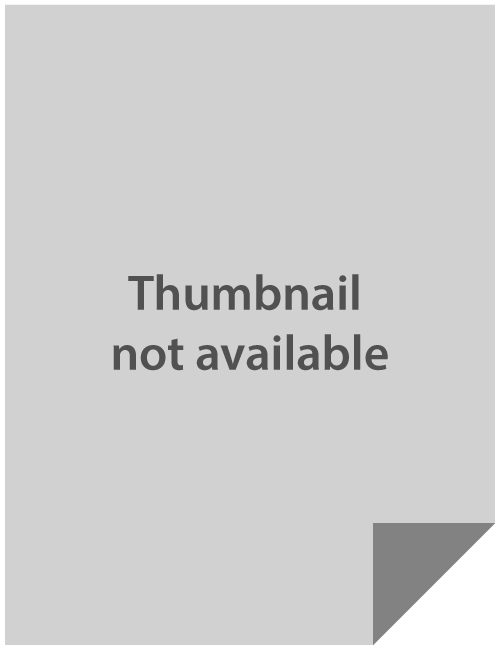EU_(Artemia4Bangladesh). Introducing circularity through climate-smart aquaculture in Bangladesh_Annual progress report 2022_March 2021 - February 2022

The objectives of the project are to introduce an integrated salt and Artemia production system and increase marine aquaculture productivity and production in the salt farms in Cox's Bazar district. The aim of this annual report is to describe the progress of the project activities, challenges faced and lessons learned during March 2021 to February 2022.
The major achievements during this period include -
i. Continuation of contracts of three international short-term consultants; recruitment of a crab value chain specialist (short term national consultant)
ii. Maintain forty partnerships including twenty nine salt farmers; one private company namely Niribili Group Limited (http://www.niribiligroup.com/); two overseas universities, Ghent University, Belgium (https://www.ugent.be/en), and Can Tho University, Vietnam, (https://caf.ctu.edu.vn/en/); two governmental organizations, Department of Fisheries (DoF), Government of Bangladesh (http://www.fisheries.gov.bd/), and Bangladesh Small and Cottage Industries Corporation (BSCIC) (http://www.bscic.gov.bd/); and two non-governmental organizations (NGOs), Mukti, Cox’s Bazar (https://mukticox.org/) and Shushilan ( https://shushilan.org/), three shrimp hatcheries and one Tilapia hatchery (Table 2, 3, 4 and 5)
iii. One hundred and ten kilogram (kg) Artemia biomass and three kg Artemia cyst (wet weight) produced in three Artemia culture demonstration farms. Laboratory analysis proved excellent quality of Artemia cyst and biomass
iv. Integrated salt-aquaculture demonstration ponds achieved shrimp production 402±174 kg/ ha/ 90 days and tilapia 1064±418 kg/ha/60 days; The production of demonstration farms was at least four times higher compared to baseline production (233 kg/ha/year) of the area
v. Twenty-three Artemia demonstration farmers located in four sub districts namely Cox’s Bazar Sadar, Chakaria, Moheshkhali and Teknaf have started fifty-two pond preparation covered 4.0 ha water area for the next production season (Table 10)
vi. Six aquaculture demonstration ponds preparation have been ongoing located in Cox’s Bazar Sadar and Teknaf for shrimp monoculture
vii. Organized annual workshop and first project steering committee (PSC) meeting on 22 November, 2021 with the eighty-four participants of multi stakeholders (annex 1). The annual workshop covered progress review, plans of activities, engagement of the stakeholders in project planning and implementation, shared experience and recognition of the contribution of salt farmers in Artemia and aquaculture production. The PSC decided to follow with DoF to set up Artemia laboratory, training of DoF and BSCIC officials on integrated salt - Artemia -aquaculture, encouraged to increase Artemia and aquaculture demonstration ponds and approved the work plan and budget
viii. Conducted sixteen capacity building events with sixteen hundred and fifty-two national and international participants. The events included Artemia cyst and biomass pond production, recirculating aquaculture system in shrimp hatcheries, consultation workshop with Artemia and aquaculture, gender awareness/ sensitization activities, integrated salt- shrimp/tilapia production
ix. The project has developed communication and visibility materials including 10 glass frames, 1 project folder, 1 note book, 1 success story, 10 training festoons, 4 X-banners, 5 pop up banners, asset stickers, 4 crests for prize giving ceremony of successful Artemia and aquaculture farmers, 10 wooden frame festoons, two YouTube videos, 36 demonstration pond signboards, souvenir pens and mugs, 22 banners of the meetings/trainings/workshops (annex 12)
x. Artemia culture guideline manual (English and Bangla), a training manual on Artemia cyst hatching, decapsulation (English and Bangla), and Artemia training manual in Bangla are under preparation
xi. Water temperature and rainfall data of Cox’s Bazar district have been collected (Figure 6 and 7). These useful climate information data have been contributing to the management decisions
xii. Baseline survey of 396 salt farmers has been completed. A brief report included in this annual report (annex 13). All salt farmers were male. Eighty-one percent salt farmers operated salt production in the leased land. Eighty-two percent of the households (HH) lived in mud built houses. The average annual income of HH was 412,533 Bangladeshi Taka (BDT) and crude salt production contributes 70% of the annual income. Forty-eight percent salt farmers had no savings and 89% HH had low dietary diversity
xiii. Seven clusters of salt farmers formed consist of 147 members in four sub districts namely Cox’s Bazar Sadar, Chakaria, Moheshkhali and Teknaf (annex 14). The cluster salt farmers are involved in Artemia pond culture, integrated salt-aquaculture and vegetable gardening
xiv. Conducted two research studies entitled (a) Assessment of shrimp hatchery (Penaeus monodon) management practices and usage of live feed (Artemia and algae) (annex 15), (b) Present status of integrated salt-aquaculture in Cox’s Bazar (annex 16)
Country wide lockdown, national and international movement restrictions due to COVID-19 pandemic, inadequate cooperation among the farmers for common resource sharing, adverse climatic conditions (heavy rainfall, flash flood, cyclone), almost no women involvement in salt production were major challenges for program implementation. Organize small scale farmers through cluster approach, multi stakeholder collaboration, production and supply of pathogen free and high nutritional quality of locally produced Artemia cyst and biomass, increased production and income through promotion of integrated salt-aquaculture including restocking of fish at homestead ponds, women participation through homestead aquaculture and vegetable gardening are the opportunities to improve food and nutrition security of the household members of the salt farmer families.
Permalink
Date Available
Type
Countries
Copyright
All right reserved
Research Themes
Language